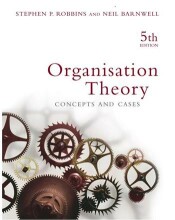Using Accounting Information
24 important questions on Using Accounting Information
What are the 2 main categories of accounting?
1. Managerial accounting - provides mangers and employees of company with the information needed to make decisions about firms financing, investing, etc.
2. Financial accounting - generates financial statements and reports for interested people outside of the organisation, e.g. stockholders.
2. Financial accounting - generates financial statements and reports for interested people outside of the organisation, e.g. stockholders.
What are the 4 other types of accounting?
1. Cost accounting - provides the cost of producing specific goods/services
2. Tax accounting - generates tax strategy and prepares tax returns
3. Government accounting - basic accounting services which verify that tax revenues are collected and used to meet the goals of state agencies
4. Not-for-profit accounting - helps not-for-profit organisations to account for donations and expenditures
2. Tax accounting - generates tax strategy and prepares tax returns
3. Government accounting - basic accounting services which verify that tax revenues are collected and used to meet the goals of state agencies
4. Not-for-profit accounting - helps not-for-profit organisations to account for donations and expenditures
What are the tasks accountants have to fulfil?
1. Verifying businesses' compliance with the GAAPs
2. Checking accuracy of financial statements
3. Supervising tax amounts, tax returns and tax payments
4. Keeping financial reports up to date
5. Helping people of an organisation in financial decision-making
6. Finding ways to reduce costs, increase revenues and improve profits
2. Checking accuracy of financial statements
3. Supervising tax amounts, tax returns and tax payments
4. Keeping financial reports up to date
5. Helping people of an organisation in financial decision-making
6. Finding ways to reduce costs, increase revenues and improve profits
- Higher grades + faster learning
- Never study anything twice
- 100% sure, 100% understanding
What qualities does an accountant need to have?
1. Ethical behaviour and responsibility
2. Strong background in financial management
3. Computer skills
4. Communication skills
2. Strong background in financial management
3. Computer skills
4. Communication skills
What is the difference between a public and a private accountant?
A public account works on a fee basis and is either self-employed or employee of an accounting firm, while a private accountant is employed by a specific organisation.
What is a CPA?
Certified public accountant. An individual who has met state requirements for accounting education and experience and has passed a rigorous accounting examination
What is the accounting equation?
The basis for the accounting process. Shows the relationship between assets, liabilities and the owner's equity. It goes: assets = liabilities + owner's equity
What is the annual report?
A report that is distributed to stockholders and other interested parties that describes a firm's operating activities and its financial condition. Can be issued semianually, quarterly or monthly.
What are the characteristics of the balance sheet?
1. Must show that the firm's assets = liabilities + owner's equity
2. Also applies to individuals
3. Owner's equity/stockholder's equity is also known as net worth
2. Also applies to individuals
3. Owner's equity/stockholder's equity is also known as net worth
What are the 3 types of assets?
1. Current assets - can be converted to cash quickly or will be used in a year or less. e.g. cash
2. Fixed assets - will be held or used for a longer period than one year. e.g. buildings
3. Intangible assets - are not physical but have value based on rights/privileges they confer on a firm. e.g. copyrights, brands, goodwill
2. Fixed assets - will be held or used for a longer period than one year. e.g. buildings
3. Intangible assets - are not physical but have value based on rights/privileges they confer on a firm. e.g. copyrights, brands, goodwill
What are the types of current assets?
1. Cash
2. Marketable securities - stocks, bonds or other investments that are convertible within days
3. Accounts receivable - allowing customers to make credit purchases that have to be paid back within one or two months
4. Notes receivable - customers have signed promissory notes that they pay back, but usually over a longer period of time
5. Merchandise inventory - the value of goods on hand for customers, may include raw material or semi-processed products for manufacturing firms
6. Prepaid expenses - assets that have been paid for in advance but have not yet been used, e.g. insurance premiums
2. Marketable securities - stocks, bonds or other investments that are convertible within days
3. Accounts receivable - allowing customers to make credit purchases that have to be paid back within one or two months
4. Notes receivable - customers have signed promissory notes that they pay back, but usually over a longer period of time
5. Merchandise inventory - the value of goods on hand for customers, may include raw material or semi-processed products for manufacturing firms
6. Prepaid expenses - assets that have been paid for in advance but have not yet been used, e.g. insurance premiums
What are the 2 types of liabilities?
1. Current liabilities - debts that need to be repaid within one year or less
2. Long-term liabilities - debts that do not need to be repaid for at least one year. e.g. mortgage
2. Long-term liabilities - debts that do not need to be repaid for at least one year. e.g. mortgage
What are the 3 types of current liabilities?
1. Accounts payable - short-term obligations resulting from a firm's credit purchases
2. Notes payable - obligations secured with promissory notes, of which only those that need to be repaid within a year are listed in the current liabilities
3. Salaries payable
4. Taxes payable
2. Notes payable - obligations secured with promissory notes, of which only those that need to be repaid within a year are listed in the current liabilities
3. Salaries payable
4. Taxes payable
What is profit or loss?
The difference between income and expenses for a company. For an individual it's called deficit or cash surplus.
What are sales allowances?
Price reductions given to customers who accept damaged or soiled merchandise
What are sales discounts?
Price reductions offered to customers who pay their bill promptly
What is the equation for the cost of goods sold?
Cost of goods sold = beginning inventory + net purchases - ending inventory
What are operating expenses?
All business costs other than the cost of goods sold, = selling expenses (marketing costs) + general expenses (cost of operating the company)
What is the statement of cash flow?
A statement that shows how the company's operating, investing and financing activities affect cash during an accounting period. Focuses on how much cash is immediately available to pay the company's bills, like dividends. Important for stakeholders to see if company could repay its debts.
In what 3 sections in the statement of cash flows split?
1. Cash flow from operating systems - primary revenue source, providing goods/services.
2. Cash flow from investing activities - include purchase/sale of land, equipment and other assets or investments
3. Cash flow from financing activities - illustrates changes in debt obligation and owner's equity account. Includes loans and repayments, etc.
2. Cash flow from investing activities - include purchase/sale of land, equipment and other assets or investments
3. Cash flow from financing activities - illustrates changes in debt obligation and owner's equity account. Includes loans and repayments, etc.
What is financial ratio analysis?
A technique which consists in computing ratios that compare values of key accounts listed on a firm's financial statement.
What are the 4 categories of ratios?
1. Liquidity ratios - measure the ability of firm to obtain the cash it needs to pay it's short-term debt obligations as they come do.
2. Asset management ratios - measure how effectively a firm is using its assets to generate revenues or cash. Aka activity ratios
3. Leverage ratio - measures the extent to which a firm relies on debt financing in its capital structure
4. Profitability ratios - measure the rate of return a firm is earning on various measures of investments
2. Asset management ratios - measure how effectively a firm is using its assets to generate revenues or cash. Aka activity ratios
3. Leverage ratio - measures the extent to which a firm relies on debt financing in its capital structure
4. Profitability ratios - measure the rate of return a firm is earning on various measures of investments
What is the inventory turnover ratio?
cost of goods sold/average inventory levels, measures how many times a firm's inventory is sold and replaced each year.
What is the average collection period?
Accounts receivable / (annual credit sales / 365). How long it takes for customers that buy stuff on credit to pay it back
Try our study magic for free
a PDF, study it super fast
- No sign up, email or credit card needed!
- AI makes unlimited flashcards
- Get unlimited quizzes and tests
- Ask AI anything
Create a notebook
- No sign up, email or credit card needed!
- Have and keep perfect overview
- Make flashcards, notes and mind maps
- Review, test and score!
The question on the page originate from the summary of the following study material:
- A unique study and practice tool
- Never study anything twice again
- Get the grades you hope for
- 100% sure, 100% understanding
Remember faster, study better. Scientifically proven.































